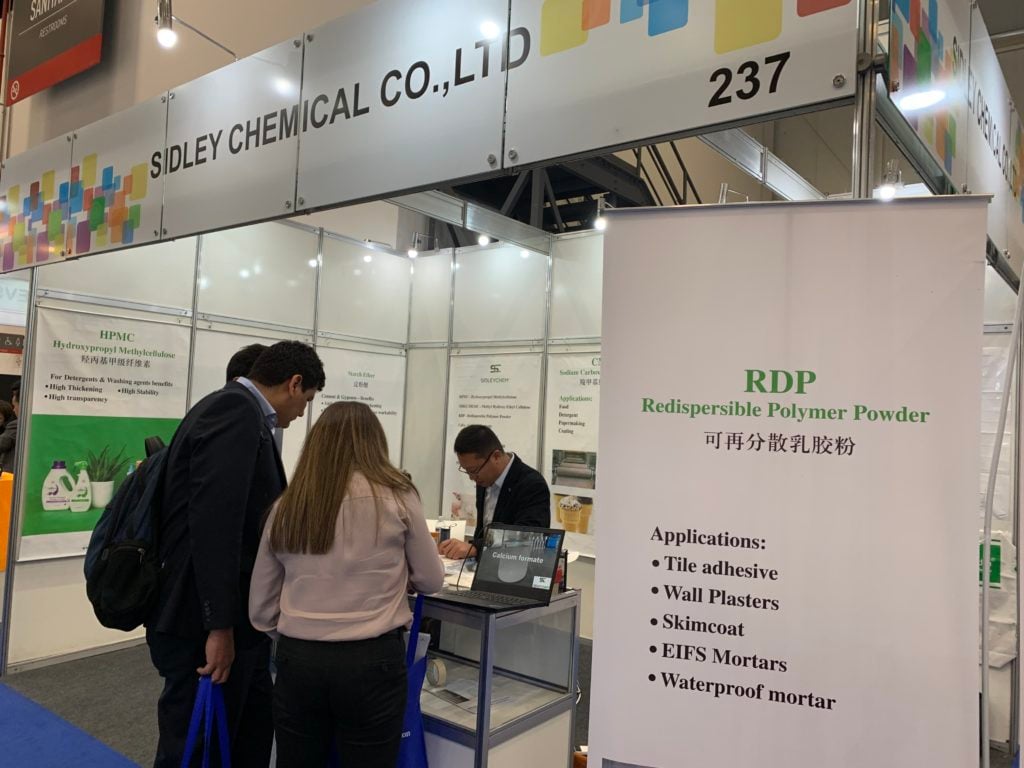As a covering material for buildings, ceramic tiles are popular among people. In addition to providing decorative surfaces with aesthetic usage, ceramic tiles are also resistant to water, hard, hygienic and easy to clean. However, the problem of tile peeling, this is, the failure of the tile bonding system, is of more concern. From the point view of composite materials, the wrong choice of traditional cement mortar and organic adhesive is the root of the problem.
Cement is a hydraulic cementitious material with high compressive strength, elastic modulus and water resistance, making it an important gelling component for structural masonry material such as concrete and mortar, but as a cladding material. When the bond strength is exerted to a large extent depends on the porosity of the substrate and the facing material, because the mechanism of the bonding property is that the cement mortar can penetrate into the pores, coagulate and harden, and function like a key insertion keyhole. Mechanically embedded to join the cladding material to the substrate.
The traditional method of tile inlaying is to mix cement(+sand) or 801 glue or polyvinyl alcohol glue at the construction site, by using a thicker, usually 10-20mm thick cement paste or cement mortar. Keep the water in the bonding layer for cement hydration(and the tiles must be soaked in water, dried in the shade, and the substrate is wetted before hand to reduce the water absorption of the two materials). Under the condition of better cement hydration. This kind of adhesive has good adhesion to ceramic tiles, but the mechanical embedding effect of stone bricks and homogenous bricks, which are more and more popular today, cannot be exerted. Moreover, this kind of cement and traditional glue is used. The main bonding material has a high modulus of elasticity and cannot eliminate the internal stress caused by the inconsistent deformation caused by shrinkage, temperature and the like between the tile and the substrate.
The internal stress is not released, eventually causing the tile to flake or crack and peel off. Therefore, for a cladding system(non-load bearing structure)composed of different layers of different materials, the matching of the elastic modulus between the different materials and the flexibility of the intermediate adhesive( and the permeability of the system)should be considered to reduce or eliminate internal stresses. Adopting the principle of “shun” is more reasonable and proven by practice than simply pursuing the “resistance” of high bond strength. Today, in developed countries such as Europe and the United States, the above mentioned “ traditional thick-layer cement mortar” has been replaced by what we call the new “thin layer tile adhesive” as a tile bonding material. This thin layer tile adhesive is a dry powder cement mortar modified with CINNAPAS redispersible powder. VINNAPAS dispersible polymer powder is a powdered organic polymer adhesive that re-disperses into an organic polymer emulsion when it comes into contact with water, and forms a polymer film when the water of the cement mortar disappears. Under the action, the formed polymer film does not undergo secondary dispersion. This polymer has excellent adhesion to smooth, low-porosity or void-free tiles or substrates, and ethylene vinyl acetate VINNAPAS dispersible polymer powder such as RE5010N and RE5044N for tile adhesives contain permanent growth. The plastic functional vinyl function gives the cement mortar sufficient flexibility, which is the best solution to eliminate the internal stress between the tile and the substrate.
VINNAPAS dispersible polymer powder plays an important role in dry powder tile adhesives, and has obvious technical and economic advantages compared with traditional thick cement mortar, the specific performance is as follows:
- VINNAPAS redispersible latex powder makes dry mortar production possible. The dry powder mortar products produced by the factory can be used only by adding water to the site, so the quality of the product is controllable.

